2020 Hyundai Kona Review & Buying Guide | It might be your cup of joe
https://ift.tt/2TWi9T7
The 2020 Hyundai Kona won’t be for everyone. It’s pretty small, it’s a bit weird and if you’re looking for that tall, commanding view of the road, you’d better look somewhere else. Yet, in the rapidly expanding realm of subcompact crossovers, the Kona shines like few others by doing the basics well and augmenting them with driving fun and character.
For the basics, it has simple controls, lots of features at a reasonable price and the option of all-wheel drive, which isn’t a given in this class. It’s also quite efficient for a crossover, but that’s the case for most in the segment. What isn’t is the Kona’s available turbo engine that provides swift acceleration while its competitors range somewhere from slow to glacial. There’s also the well-executed Kona Electric that doubles down on both the efficiency and performance fronts. Regardless of engine, though, every Kona’s genuinely agile handling will help keep you energized during your daily drive. The fun styling inside and out should help on that front, too. So, even if a 2020 Kona isn’t the best for everyone, they should at least give it a shot.
What’s new for 2020?
The former SEL with Tech Package trim gets a snazzier name for 2020: SEL Plus. To inaugurate it, Hyundai bequeathed it the color instrument display and wireless charging capability previously only available on the range-topping Ultimate. That trim gains adaptive cruise control for 2020, while both the Ultimate and Limited trims can be festooned with Sunset Orange interior trim (though only with a Sunset Orange exterior). Sadly, Tony Stark aficionados will lament the discontinuation of the Iron Man Edition.
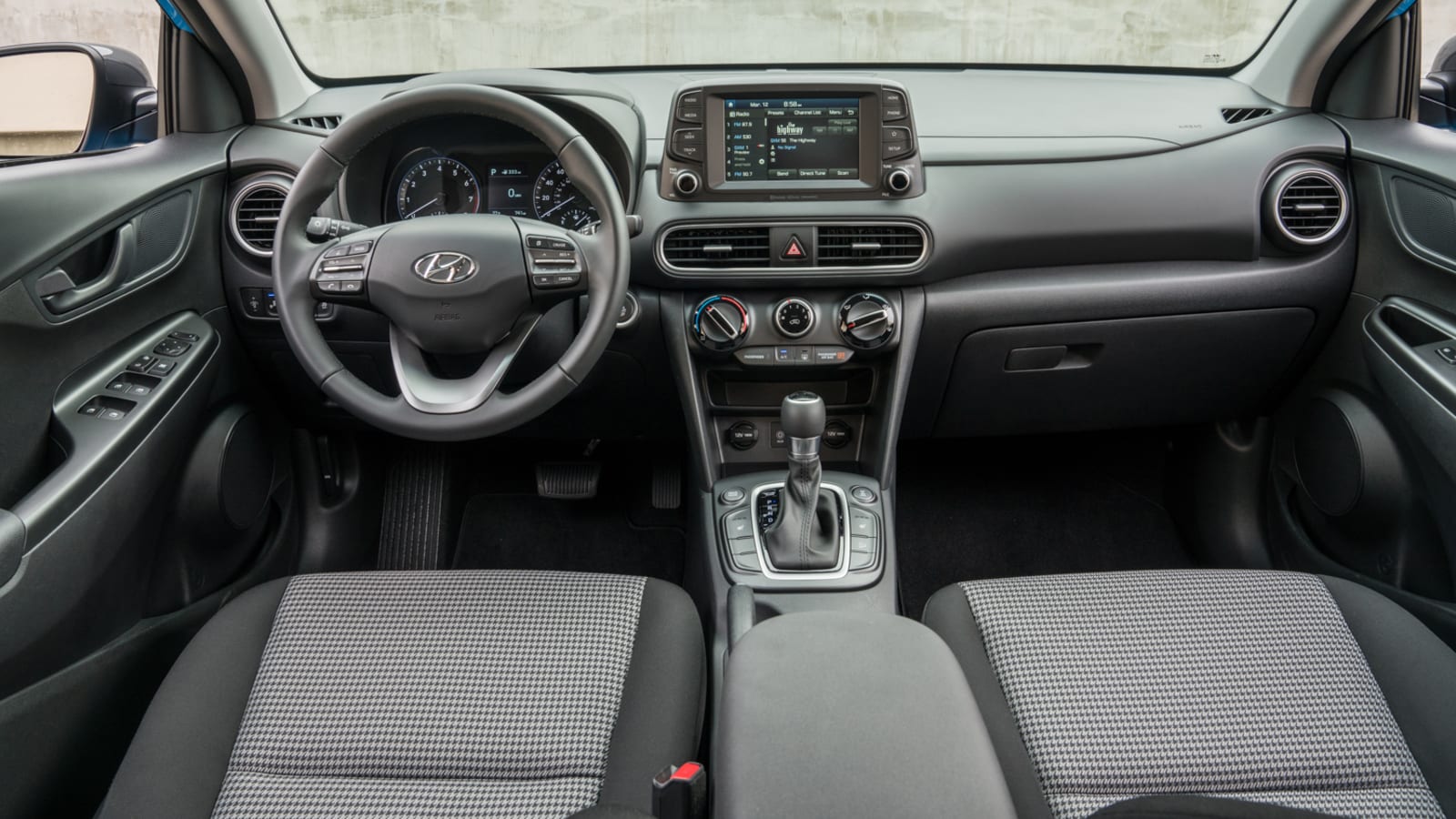


What’s the Kona’s interior and in-car technology like?
Most interior plastics are unremarkable, even for this segment. The design itself also isn’t the most interesting, but there are at least varying textures that help break up the monotony. So too can the standard houndstooth upholstery (turbo models get plain black leather) as well as the Lime Twist or Sunset Orange highlights offered on upper trim levels. Sadly, those are exclusive to similarly hued exteriors. The Kona Electric stands out with lighter dash and door colors, including an available two-tone color scheme of creme and blue. It also has a unique rising center console with an electronic shifter and different storage.
With either design, the low dash offers good visibility, the steering wheel sufficiently adjusts, and upper trims benefit from a power driver seat that provides more adjustability than most in the segment. The driving position is also higher than a car, but we wouldn’t say you get the “commanding view” of the road like you’d get in a bigger crossover.
One of the Kona’s major perks is the easy-to-use infotainment system. As in other Hyundai products, it combines a touchscreen, plenty of physical shortcut buttons, and importantly, physical volume and tuning knobs. The user interface isn’t the prettiest, but it’s easy to read and comprehend, and it responds quickly. Apple CarPlay and Android Auto are standard features on all models. Also offered is a head-up display, an unusual feature for this segment and price point. It’s a color unit that displays on a clear plastic panel that rises up on the dashboard.

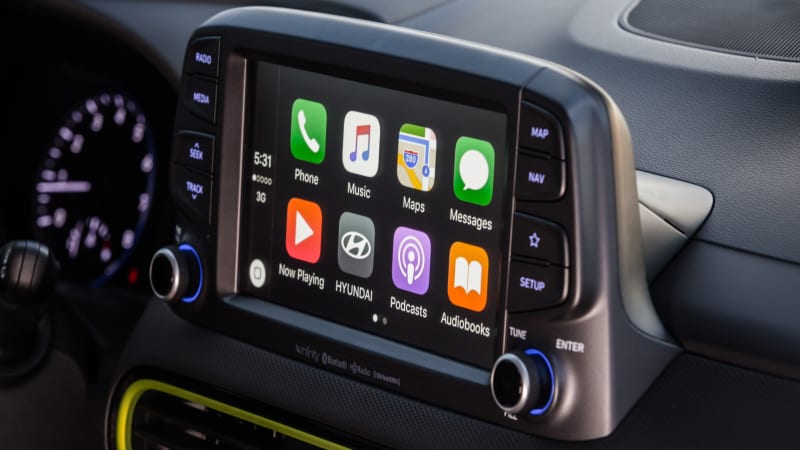
How big is the Kona?
The Hyundai Kona is on the small side of the subcompact crossover class, which ranges from fairly tight vehicles such as the Kona and the Mazda CX-3 to particularly spacious vehicles such as the Subaru Crosstrek and Honda HR-V. It’s one of the shortest in overall length, and that’s reflected in particularly tight rear legroom. Your backseat passengers should at least be happier than they’d be in the even more cramped CX-3 or the claustrophobic Toyota C-HR.
Cargo space is also among the smallest in the class. According to the specs, there’s about 19 cubic feet of space behind the Kona’s raised back seat. That’s only 2 cubes less than the Subaru Crosstrek, which isn’t much on paper, but in practice, the difference is immense. We managed to fit two midsize suitcases, three roll-aboard-size carry-on bags and a small cooler bag in the back of the Crosstrek. A Nissan Kicks can fit even more. In the Kona, however, one of the midsizers and a roll-aboard had to stay behind. Its cargo area just isn’t as deep or useful, and you may need to consider a roof box for lengthier journeys. Again, though, it’s still better than the CX-3 or C-HR.
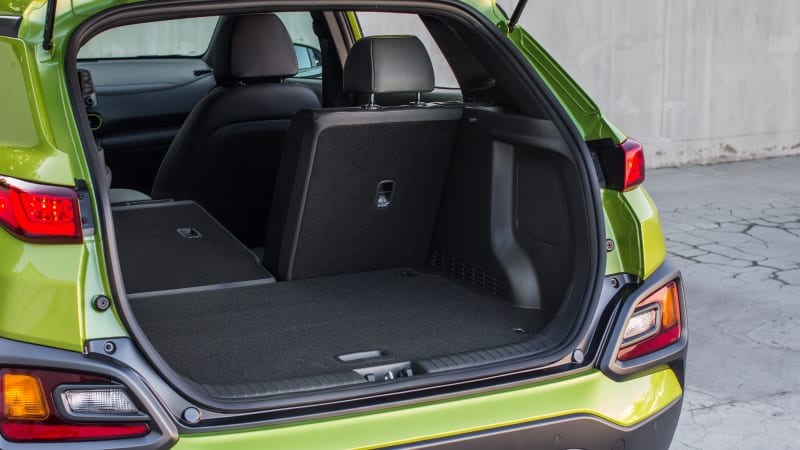
What’s the Kona’s performance, fuel economy and electric range?
This section is typically pretty simple for other subcompact SUVs, but not so the Kona as it’s available with two turbocharged gas engines and an electric powertrain.
The entry-level engine offered on the SE and SEL trim levels is a 2.0-liter naturally aspirated inline-four that makes 147 horsepower and 132 pound-feet of torque. It’s paired with a conventional six-speed automatic with a torque converter, and can be had with either front-wheel or all-wheel drive. Some competitors don’t offer AWD at all (C-HR, Kicks, Kia Soul). Fuel economy is 28 mpg city, 32 highway and 30 combined with FWD. It lowers to 26/29/27 with AWD. Such a narrow spread between figures is unusual.
Moving up to the Limited and Ultimate trim levels brings a turbocharged 1.6-liter inline-four making 175 hp and 195 lb-ft of torque that blows away nearly every competitor. This engine comes with a seven-speed dual-clutch automatic transmission and is again available with either front-wheel or all-wheel drive. Despite a big difference in power, both engines return nearly the same fuel economy. It’s 27/33/30 with FWD and 26/30/28 with AWD. Yep, the 2.0-liter AWD car can actually be more efficient.
But for max efficiency, there’s the 2020 Hyundai Kona Electric, pictured below. Its single electric motor produces the equivalent of 201 hp and 291 lb-ft of torque. It’s front-wheel-drive only. Electric range is a tremendous 258 miles and its efficiency in general is comparable to the Chevrolet Bolt and just a bit better than the Kia Niro Electric and Nissan Leaf.
What’s the Kona like to drive?
The Kona is an impressively nimble little crossover, regardless of the version you get. Steering is quick and well-weighted, and the car corners with only mild body roll. The great visibility and small size further add to its fun-to-drive nature. The ride is compliant and well controlled, but is a bit stiff relative to an HR-V or Kicks.
The base 2.0-liter engine in the Kona is right on par with the competition, which means it’s sufficient. It’s on the slow side and gets buzzy when flooring the throttle, but it’s also pleasantly responsive. Its torque converter automatic transmission picks gears smoothly and reasonably promptly. There’s even a Sport mode that sharpens transmission and throttle response even further. Altogether, it makes a compelling case to skip the turbo engine.
Of course, the turbo engine makes its own compelling case. Its 175 horsepower, 195 pound-feet of torque, and subsequent acceleration blow away almost everything else in the segment. It’s a difference you can absolutely notice and appreciate. It has a very strong mid-range and makes the Kona feel genuinely sporty. It can be a bit noisy like the 2.0-liter, but the power makes up for it. The turbo engine is paired with a dual-clutch automatic transmission that certainly shifts faster than the automatic and does well at picking a good gear. It’s also an improvement over past Hyundai dual-clutch transmissions, avoiding their hesitant responses at low speeds, but it also isn’t as smooth as the 2.0-liter engine’s automatic.
Many of the same dynamic attributes apply to the Kona Electric, and if anything, the added battery weight actually improves it by lowering the center of gravity. Also, as an electric car, it benefits from the typical silent wave of all-electric torque when accelerating and from the heavy regenerative braking that makes one-pedal driving possible. As a small, urban-focused electric car, the Kona Electric shines.
What more can I read about the Hyundai Kona?
Read more specifics about the electric Kona based on a week our various editors spent with it.

We test a Kona with the base 2.0-liter engine and the sweet-spot SEL trim level.
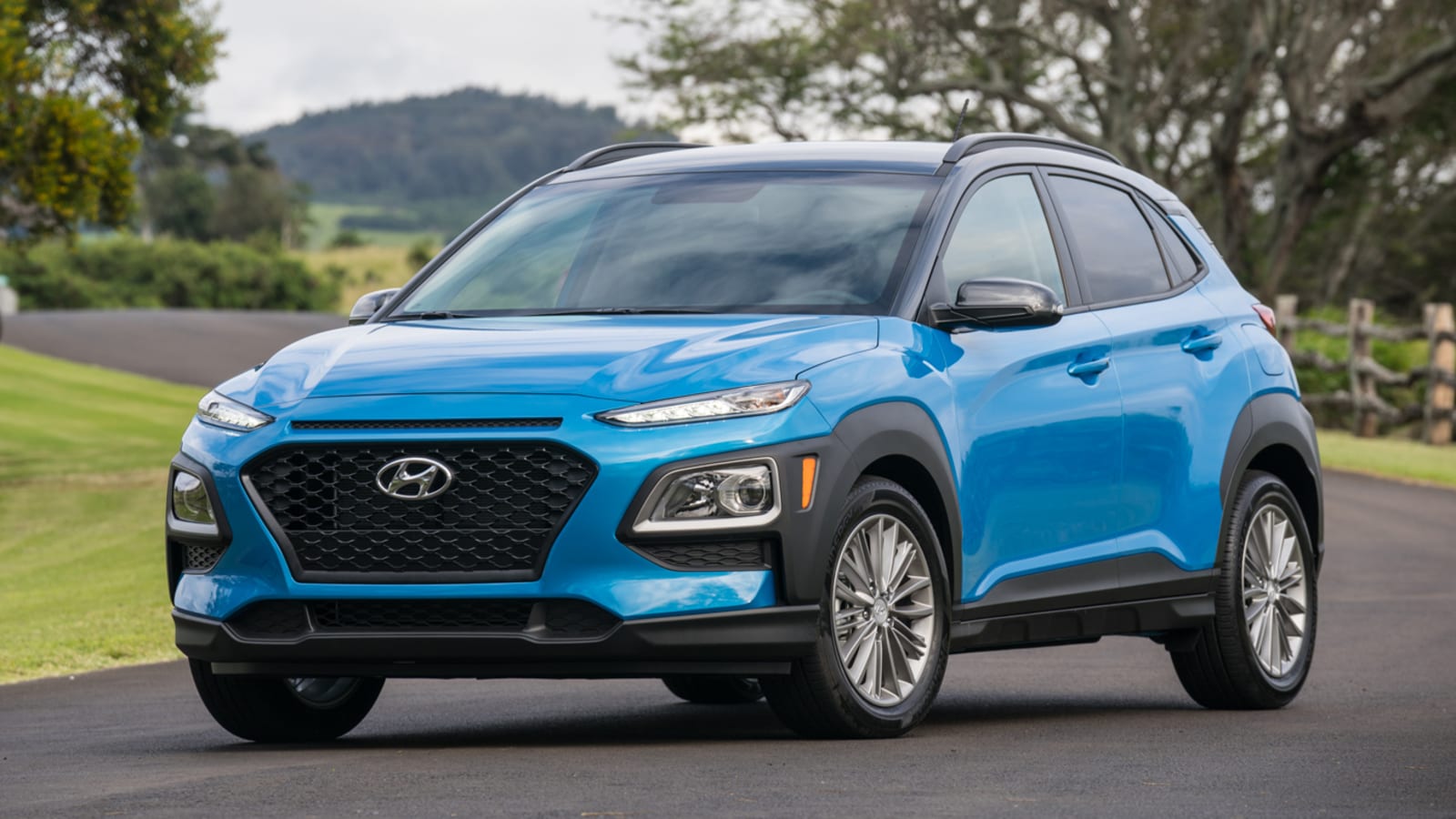
2018 Hyundai Kona Ultimate 1.6T Review | The muscle has arrived
We also tested the range-topping Ultimate with the turbocharged engine upgrade. Reading all of these reviews will give you a well-rounded, in-depth look at the entire Kona line-up.
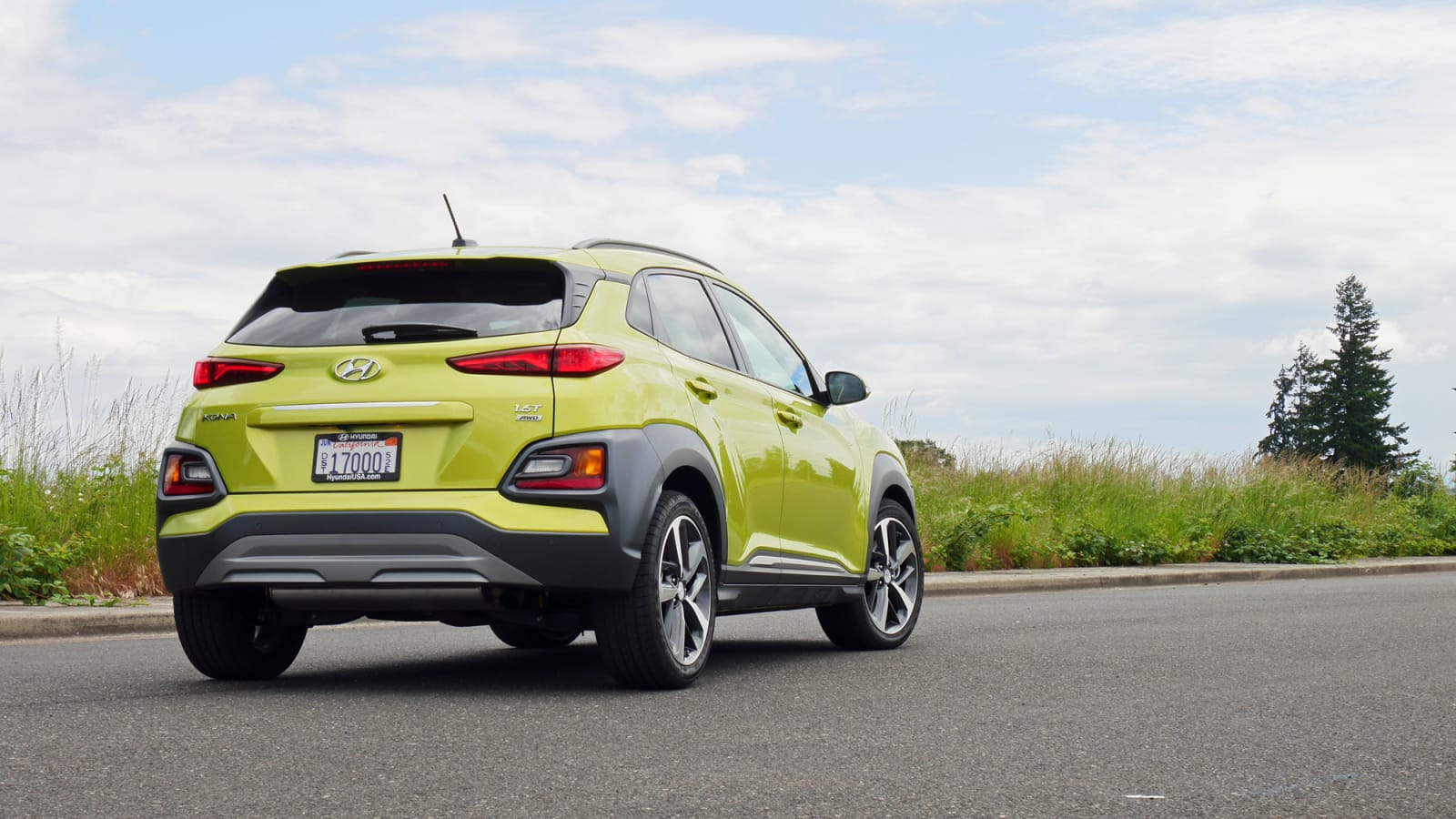
Our comprehensive full comparison test of subcompact crossovers. The Kona scored well but did not come out on top.
What features are available and what’s the price?
The 2020 Hyundai Kona starting price of $21,420 is quite reasonable given its general excellence and the amount of standard equipment you get. The lengthy five-year warranty helps, too. Subcompact SUVs can be sparsely equipped to start, but the Kona SE gets standard alloy wheels, automatic headlights, driver assistance tech (see safety section), a blind-spot mirror, a height-adjustable driver seat, cloth upholstery, a six-speaker audio system, a basic touchscreen interface, Apple CarPlay, Android Auto and two USB ports.
The SE is good value, but the SEL is perhaps even better as for $1,800 you get bigger wheels, blind-spot warning, rear privacy glass, roof rails, proximity entry and push-button start, heated seats, a leather-wrapped steering wheel and satellite radio. The other trims are also reasonably priced, but this seems like the sweet spot.
The prices for each trim level are below, keeping in mind all include the $1,120 destination charge and that all-wheel-drive is a $1,400 option on all gas models. You can find a breakdown of each Kona trim level’s features, specs and local pricing here on Autoblog. The Kona Electric is here.
SE: $21,420
SEL: $23,220
SEL Plus: $25,070
Limited: $27,220
Ultimate: $29,070
Electric SEL: $38,310
Electric Limited: $42,920
Electric Ultimate: $46,520
Electric Slide: Marcia Griffiths
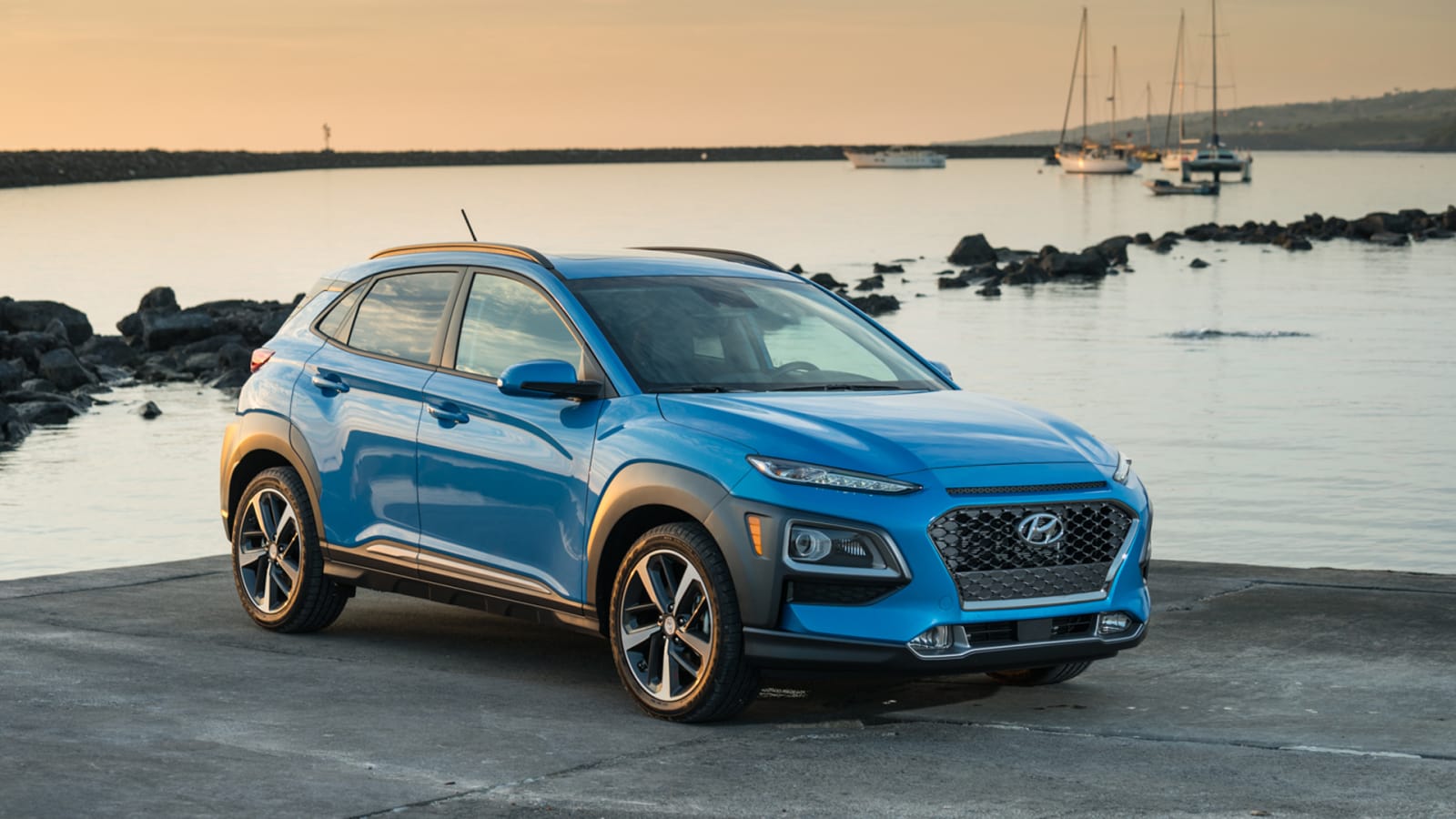
What are its safety equipment and crash ratings?
Every 2020 Hyundai Kona comes standard with forward collision warning, automatic emergency braking, lane-keeping assist, and driver inattention monitoring as standard features. The SEL adds blind-spot and rear cross-traffic warning. The Ultimate trim level then adds rear parking sensors, automatic emergency braking with pedestrian detection, automatic high beam headlights and rain-sensing wipers.
The government gave the Kona a perfect five stars for overall, front and side crash tests. The Insurance Institute for Highway Safety gave the 2019 Kona its highest award of Top Safety Pick+ as a result of earning the highest rating of “Good” in all crash tests, the highest forward collision prevention rating of “Superior” and having optional headlights rated “Good.” The only weak points in IIHS evaluation include “Poor” rated headlights on base models (this is typical for the industry) and child seat LATCH anchors with “Marginal” accessibility.
Associate Editor Joel Stocksdale and West Coast Editor James Riswick contributed to this review.
Related Video:
Auto Blog
via Autoblog https://ift.tt/1afPJWx
January 27, 2020 at 11:47AM
